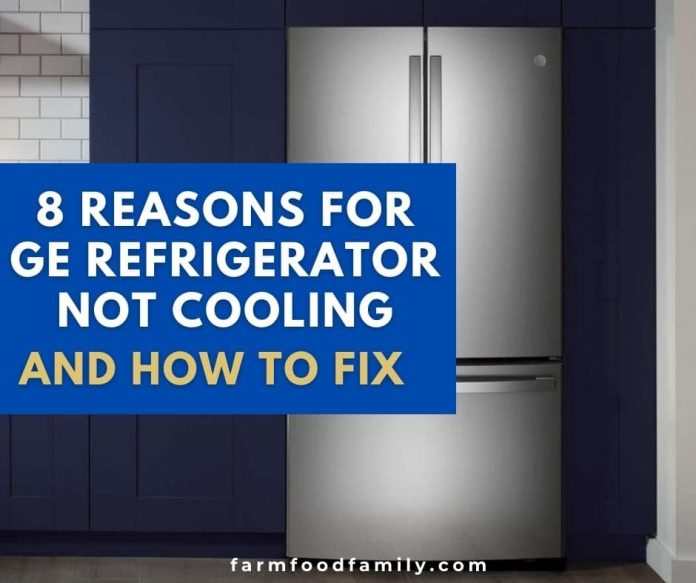8 Reasons for GE Refrigerator Not Cooling and {How To Fix}
It is not practical to have a GE refrigerator that does not cool. Because of deterioration in the fridge, you may feel compelled to buy more goods than you require. It can also be hazardous to one’s health because it only keeps things cold for a short time.
It might be aggravating to have your phone ring continuously while a repair worker is on the other end of the line. Furthermore, if your warranty has run out and the repair is costly, it may not be financially feasible to solve the problem with a large repair fee.
Related: 7 Refrigerator Brands To Avoid and 5 Most Reliable Brands
In this article:
What causes a GE refrigerator to stop cooling? And how to fix
While GE Appliances has a reputation for making some of the greatest refrigerators on the market, many of which may last up to 20 years, cooling troubles are one of the most prevalent complaints. Furthermore, it’s a major problem that might shorten the shelf life of your food, necessitating fast action.
1. Temperature settings is not set correctly
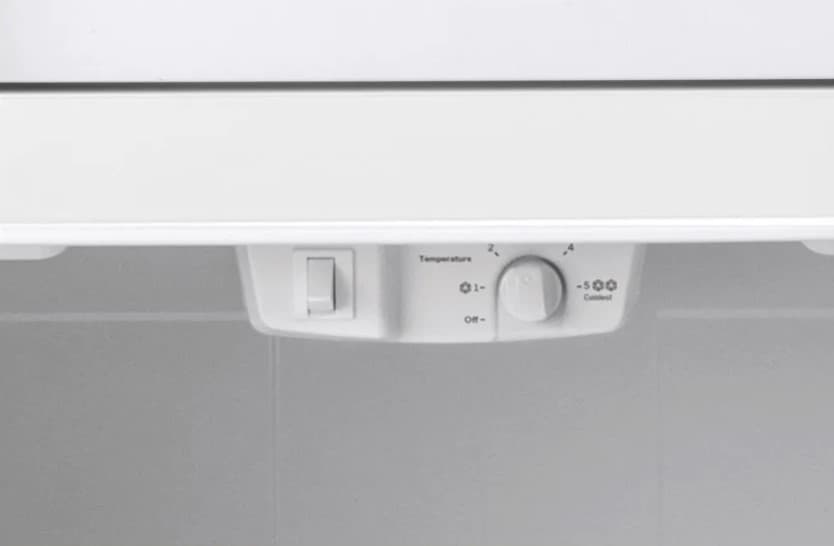
When your GE refrigerator temperature settings read a cold temperature but the interior seems warmer, something is likely wrong. Fortunately, this is usually a temperature management issue rather than a cooling one.
You may refer to your refrigerator’s owner’s handbook to establish the best cooling temperature for your model and then adjust the temperature accordingly.
If you don’t have your handbook accessible, the USDA recommends that food refrigerated at or below 40° Fahrenheit slows bacterial development. Measure the temperature of your refrigerator using a different thermometer.
Reduce the refrigerator’s temperature by a few degrees and wait 24 hours if the inside is warmer than what the refrigerator is reading. Lower the temperature gradually and wait for it to at least reach 4°C as it only drops a little.
2. Condenser Coils that are filthy
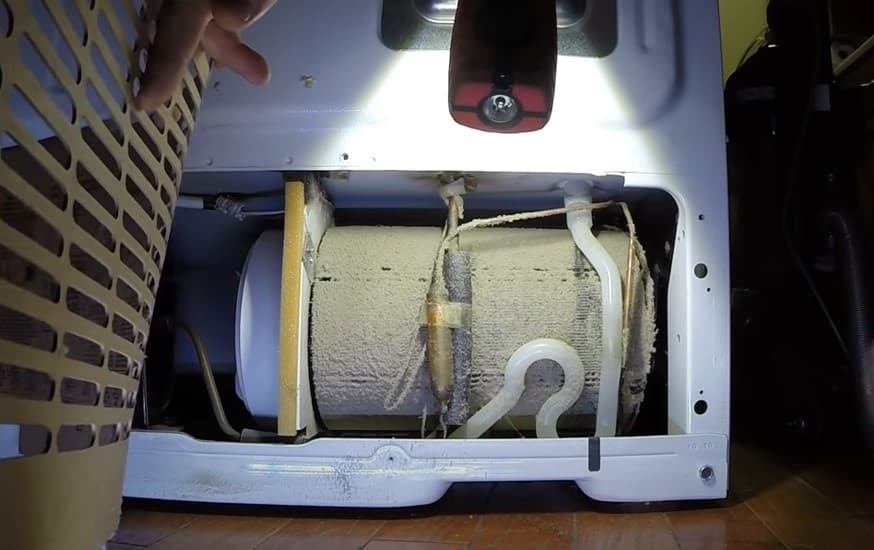
Refrigerator coils release heat when refrigerant passes over them, assisting in maintaining the refrigerator’s temperature. These coils are usually found at the bottom of the refrigerator and are prone to dust accumulation.
This prevents them from releasing that heat, resulting in a rise in the temperature of your refrigerator.
Experts recommend tidying up the GE refrigerator twice a year by utilizing or making use of an appropriate appliance brush which you can purchase both online or any physical stores. Side note, to also purchase a facemask since it’s going to be dusty. Here’s how to quickly and simply clean refrigerator condenser coils:

- Detach refrigerator plug.
- The coil on your refrigerator varies from one unit to another, so it’s essential that you look for it in the handbook that came with it when you bought your GE refrigerator.
- Unfasten the grill from the coils’ front.
- With a long, thin hose attachment, vacuum the coils.
- With the appliance brush, remove any leftover dust.
- In front of the coils, replace the grill.
- Connect the refrigerator again.
3. The condenser fan is malfunctioning.
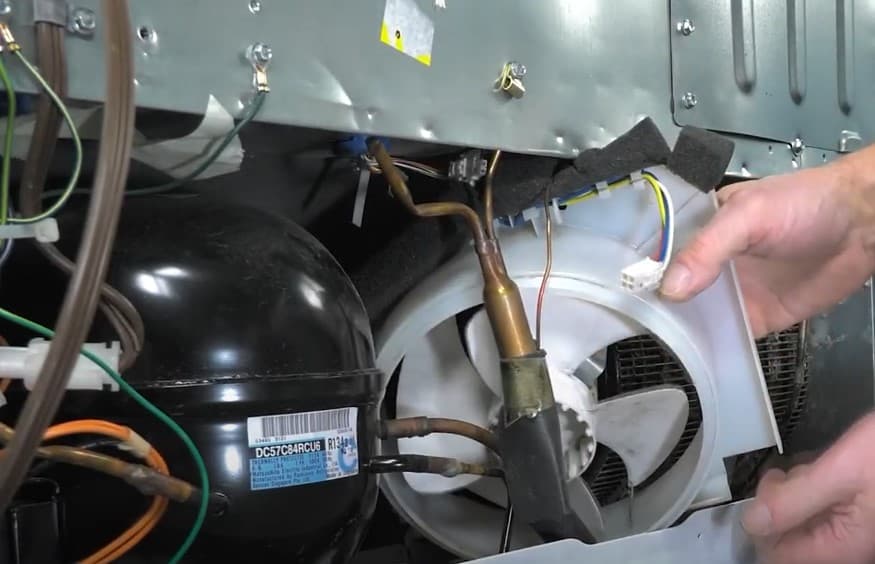
Another item to examine if your GE refrigerator isn’t cooling is the condenser fan. This fan for the condenser motor keeps the refrigerant coils cold and increases efficiency. It also keeps the inside of the fridge from getting too hot.
There are two primary reasons why this fan may be malfunctioning:
- Condenser coils clogged
- Condenser fan motor is faulty or clogged.
Dirt, lint, and pet hair are likely clogging the condenser coil, which is situated on the back of your appliance. You have the option of removing it yourself (with a screwdriver) or hiring a professional.
If you want to keep this coil clean in the future, blast away any dirt with compressed air before reinstalling it.
4. Electricity
The most obvious flaw is a lack of electricity, which is surprisingly simple to overlook unless you frequently open the GE refrigerator late at night. The simplest way to check if the refrigerator has electricity is to open the door and look for a light. If the light comes on, the device has power.
There are numerous options if the power does not come on, which will be accompanied by a significant absence of operating noise. Check the current by inserting the unit into another socket or using a multimeter. Alternatively, you may need to replace the plug or adjust the plug fuse.
5. The defrost timer has been programmed improperly.
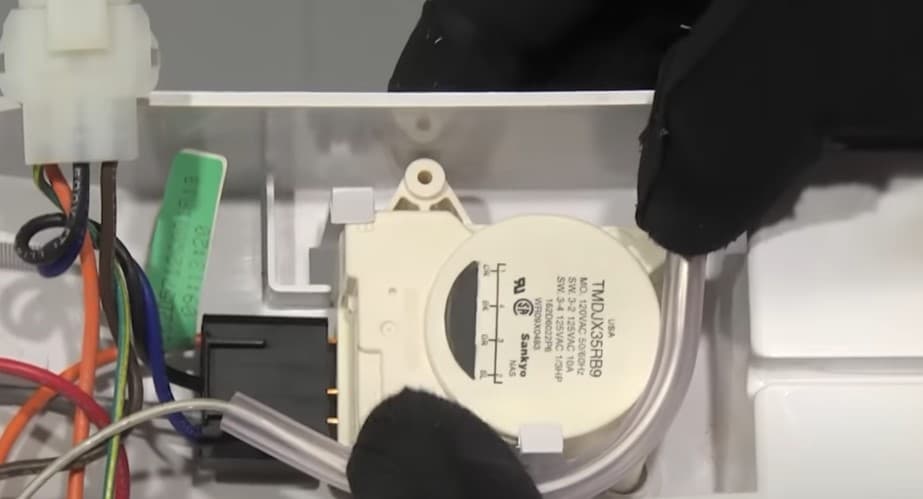
The most common cause of a GE refrigerator not chilling is a defrost timer that has been set improperly or not at all.
There are just two settings for the defrost timer: off or on.
The refrigerator is turned off if it is not cooling and has been operating for more than 24 hours.
The refrigerator will work again once its temperature dwindles down since it’s been working nonstop in the last 24 hours, which most likely means it is on.
A compressor will never be activated if a defrost timer is set. It’s going to work on the refrigerator for some time or until the freezer compartment temperature reaches -10 degrees Fahrenheit (approximately -18 degrees Celsius).
The following procedures can be used to reset the GE refrigerator timer:
- By disconnecting the machine, you will be able to switch off the power.
- Then you must empty the lower freezer door shelf of all contents.
- Then, until the “Freezer” button blinks, push and hold it.
- You may now type in the desired time.
6. A door seal that isn’t up to snuff
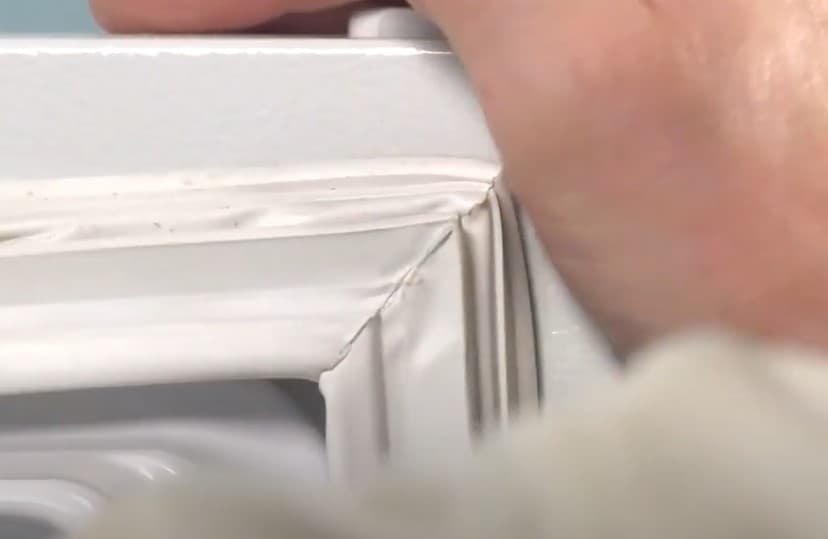
The most prevalent causes of a refrigerator not cooling properly are overheating and undercooling. The efficiency of a refrigerator is also influenced by the door seal.
Inadequate refrigeration seals can cause the fridge to overheat and undercool. It can also lead to inconsistencies in fridge and freezer temperatures, as well as higher energy use.
The first step is to check sure your refrigerator is level and that all of the doors are securely closed. Check for any standing water or ice accumulation in or around your refrigerator, as they might be contributing to your problem.
7. Malfunctioning Temperature Sensor
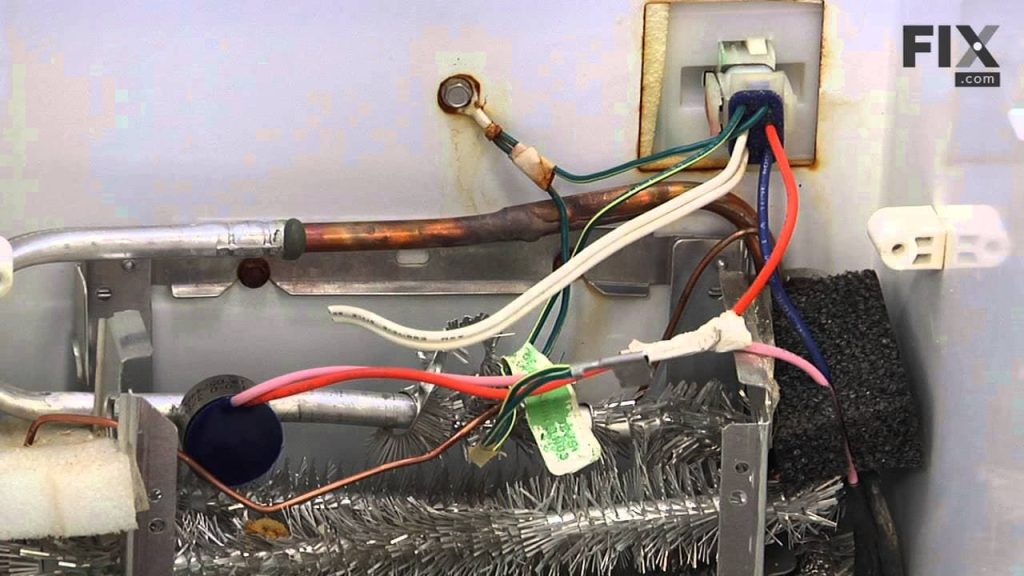
Setting the thermostat to the proper temperature won’t help if the fridge’s computer isn’t receiving the correct information. The temperature sensor, or thermistor as most people call it, passes on information to the control board and detects temperature.
You need to change the thermistor if the temperature is not reaching the optimum temperature of a refrigerator. If you do this by yourself, it is absolutely essential to remember to unplug the cord from the wall outlet before installing the part.
8. Dials for Thermostats
Your GE appliance’s thermostat was most likely set at 35°F to 37°F. However, knocking the dial without noticing it is quite easy. The dial located within the fridge compartment is found on all of the newer GE models described above, whereas fridge-freezer units have a dual temperature dial.
The left dial of a dual temperature dial controls the freezer, while the right dial controls the refrigerator. The dial goes from 1 to 9, with 1 being the hottest and 9 being the coldest, and flipping the dial to 0 turning off the cooling. The cooling unit takes 24 hours to start working after installation, so don’t be alarmed on the first day.
Related: 10 Reasons For Whirlpool Refrigerator Not Cooling and {How To Fix}
GE fridge not cooling but light is on
If your GE refrigerator isn’t cooling properly but everything else appears to be working, such as the lights inside, there might be a problem with the main controller board.
The controller board malfunctioning can cause issues since it is essentially the brain of the refrigerator. And you might not want that to happen.
However, this is a common issue for GE refrigerators. You can detect charred markings or poor soldering joints on the motherboard if it has been overheated. It will most likely cost more or less than $500 to hire a repairman to diagnose and solve the problem.
Fortunately, even if you are not too handy, you can buy the controller board from online malls for a much cheaper cost and install it yourself. GE makes it simple to locate the correct component.
GE refrigerator not cooling but freezer is working
A GE refrigerator is a great kitchen appliance, but it can have issues from time to time. One of the most prevalent problems is when the freezer is working well but the refrigerator isn’t chilling. Fortunately, most of the faults may be resolved on your own when this occurs. To know more about this issue, keep reading below.
If the door gasket, which is important in keeping the temperature of your refrigerator stable, slides, the door will not seal properly, allowing chilly air to escape. This is why it’s important to build a seal.
Misalignment causes many door gaskets to fail. You may easily correct this problem by gently pushing the gasket back into place with your finger or a tool.
Your GE refrigerator’s defrost assembly is engaged multiple times a day to remove any ice that has developed on the evaporator coils. When the defrost heater component fails, ice forms on the coils, preventing air from moving through and cooling your refrigerator.
To establish which component is at issue, have a qualified servicer evaluate the defrost thermostat, timer, and control board.
The air intake damper of GE refrigerators is in charge of the continuity of optimum temperature throughout the whole unit. The cold air may not flow correctly if the damper breaks or becomes blocked, and your fridge may not receive enough cool air.
Examine the damper to make sure it’s properly opening and closing. In any instance that it doesn’t, you shall have it checked with an expert.
But what if the evaporator fan is turned on and the damper door is open, but no air is going out? The evaporator may get frozen over in that case.
Related: 5 Reasons for Samsung Refrigerator Ice Maker Not Working (How To Fix)
GE refrigerator not cooling or freezing
[embedded content]
According to the Information Technology website of Appliance Repair, self-defrosting functions cause one of the most frequent issues which is the not cooling properly of a GE refrigerator.
The thermistor, defrost thermostat, or heater placed above the coils are likely to be the source of the problem.
In addition, the shutdown arm on your GE refrigerator’s ice maker may need to be reset. GE refrigerators are a well-known brand with a wide range of types. You can reset the refrigerator if it stops reacting to the temperature dial or stops generating ice.
Finally, vacuuming the coils beneath or behind the refrigerator might assist. Because of obstructed coils, cooling can be affected negatively. This can be avoided completely if the condenser fan is not stuffed, allowing it to spin freely. In order to achieve this, remove it by detaching the refrigerator.
This can be avoided completely if the condenser fan is not stuffed, allowing it to spin freely. In order to achieve this, remove it by detaching the refrigerator.
GE refrigerator not cooling after power outage
A malfunctioning control board is most likely to blame for a GE refrigerator that isn’t running or cooling after a power loss. Because no signal is delivered to the fan to start spinning, a broken board will prevent the GE machine from cooling.
Lights that flash, strange whining noises, a burning odor, and the light inside the refrigerator not working are just some of the signs of a faulty control board to look out for.
Remove the control panel and replace it with one that’s working. This procedure necessitates easy troubleshooting that may be completed in under an hour at home. Before you replace your refrigerator’s control board, be sure you have the proper part for your refrigerator’s make and model. Every design is unique.
GE refrigerator not cooling after cleaning
Located in a panel behind the freezer is another set of coils, known as the evaporator coils. These coils are cooled by the refrigerant, which passes through them and converts to gas.
The job of the evaporator fan is to get cool air from the coil and distribute it throughout the entire unit, first via the freezer, then through the refrigerator. Cool air will not circulate correctly if the evaporator fan motor is damaged.
Sometimes you’ll have a freezer that’s still very chilly (since the coils are close by), but a fresh food compartment that’s not at all cold (because the cool air isn’t being forced there). If the evaporator fan is the source of the problem, the fan’s motor will almost certainly need to be replaced.
GE refrigerator not cooling on the refrigerator side
Too much food might cause a GE refrigerator to be warm yet the freezer to be cool. When there are too many goods in the freezer, the cold air that needs to pass to the refrigerator might get obstructed. Similarly, things can obstruct the air vents that allow cold air to enter the fridge’s interior if the refrigerator is too full.
Remove any old or expired food from your fridge or freezer if it looks to be overflowing. Make sure that nothing is blocking the air vents so that cold air may circulate freely. Rearranging shelves and containers to allow for improved ventilation between goods is a good idea.
GE refrigerator compressor hot
If the sides and top of your refrigerator are overheating, examine the compressor first. The compressor is part of the cooling system of the appliance and is required for normal operation.
A compressor can get heated due to a number of factors, including a shortage of refrigerant in the appliance or a refrigerator thermostat that is set too low, leading the compressor to work too hard.
Make sure your refrigerator’s thermostat is set to the correct temperature. Checking the refrigerant levels manually is a bit more complicated; if you reach this point, you’ll almost certainly require expert help.
If the refrigerator’s programmed temperature isn’t the problem, locate another location to store perishables and disconnect the appliance. When the compressor overheats, it’s not safe to keep it running.
Regardless of the problem with your refrigerator’s compressor, you may need the assistance of a professional to complete repairs once you’ve completed troubleshooting.
However, by investigating the problem yourself, you may be able to save time and money, since the expert will come to your home prepared to remedy the problem and with the necessary equipment and materials.
GE refrigerator not cooling and making clicking sound
If you hear a steady “clicking” sound emanating from the back side of the refrigerator every few seconds, the motherboard may be at fault. Remove the refrigerator while it is still producing noise and listen for the source of the noise. On the back of the refrigerator, there should be a panel; beneath this panel is the control board.
If the noise appears to originate from the control board, the control board has failed and must be replaced. Because GE does not provide replacement components for the control board, if there is a problem with the control board, the entire control board must be replaced.
When the control board malfunctions, the refrigerator may not operate or chill properly. It also regulates the water dispenser, fan motors, and other functions. It just takes around 15 minutes to replace the motherboard. Before buying, be sure to search up the proper control board using the model number on the refrigerator.
Related: Why Is My Refrigerator Leaking Water? (Here’s How To Fix)
FAQs
How do I reset my GE refrigerator not cooling?
You can reset the refrigerator if it stops reacting to the temperature dial or stops generating ice. Resetting your appliance can clear it and get it up and running again. It will take you less than 10 minutes to complete this procedure, and you will save money by not having to hire a technician.
Step 1: Make the necessary adjustments to the refrigerator
Move your refrigerator as far away from the wall as possible to begin the repair process. This will offer you complete access to the refrigerator as well as the ability to clean the space behind it.
Step 2: Remove the plug from the outlet
You know where your refrigerator’s power wire attaches to the wall’s AC outlet. It’s going to be obvious since you moved the refrigerator away.
Remove the plug from your GE refrigerator and leave it unplugged for approximately a minute.
Step 3: Connect it
Plug your refrigerator back into the wall outlet after a brief time has passed.
Wait for it to start up and listen for it.
Step 4: Turn off the main switch
The shutoff switch of the freezer is a small device located inside.
This switch can be found in the freezer of your GE refrigerator.
Turn it off for about 30 seconds and then turn it back on.
Step 5: Reset
Go to your GE refrigerator’s ice maker to finish the process.
This switch is normally found towards the top of the ice machine.
Reset the refrigerator by pushing it up and down three times.
This switch is normally found towards the top of the ice machine. Reset the refrigerator by pushing it up and down three times. It’s normally in the middle of the rear panel or above the higher rack on a panel above the refrigerator. If you make tiny temperature changes, you risk freezing the contents of your refrigerator.
Conclusion
Refrigerators have just one use in your home: to cool and store food at a lower temperature than ambient temperature. It’s critical that you locate a speedy remedy if your GE refrigerator is now failing to do so.
This easy-to-follow guide on identifying and repairing different errors pertaining to the temperature of the unit is a great place to start.
The quality and performance of GE refrigerators are well-known. However, even GE refrigerators may have problems, so knowing how to diagnose the problem is essential.
As a result, it’s critical to understand all of the common causes of this issue. It’s critical to know the scope of a problem before phoning a support center. No repairman will be able to overcharge you for minor repairs this way. As a result, we’ve attempted to cover all of the typical concerns that might cause your GE refrigerator to cease chilling in one page.
If you’re having trouble diagnosing the problem or don’t have any expertise changing and repairing mechanical parts, it’s not a bad idea to hire a professional.
Kitchen appliances may be tricky, and experts advise against dismantling your refrigerator if you don’t know what you’re doing. It is not only possible that you could further damage your pricey equipment, but it is also quite dangerous.

